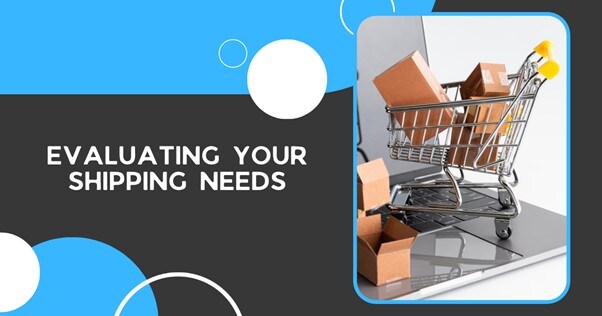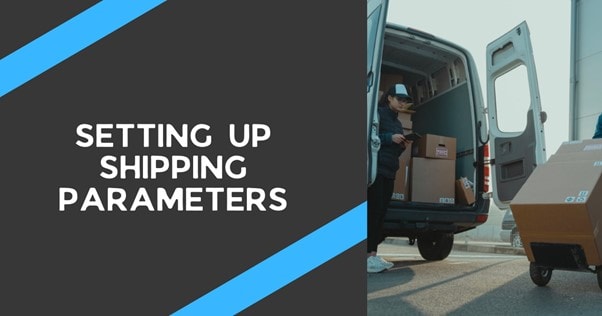E-Commerce Shipping Made Simple: A Step-by-step guide using 3PL
63% of online shoppers cancel a purchase due to excessive shipping fees.
Navigating the world of e-commerce shipping can be a complex and daunting task. A labyrinth of choices and decisions often leaves businesses scratching their heads. But there's a solution that can transform this confusing task into a streamlined process: Third-Party Logistics (3PL). The aims are to break down the barriers and simplify shipping for businesses of all sizes.
Using 3PL, even the most complex shipping operations can become more manageable and efficient. This guide is designed to serve as a road map, offering clear and concise steps to make e-commerce shipping a smooth, integrated part of any business. Let's explore how to simplify shipping, be more cost-effective, and align with today's fast-paced market needs.
Evaluating Your Shipping Needs
Evaluating shipping needs is the starting point for any e-commerce business aiming to optimize logistics. A clear strategy can be formulated by understanding the types and volumes of products, destination reach, and customer expectations.
This process aids in selecting the appropriate 3PL partner, ensuring that shipping is aligned with business goals, and ultimately leads to a more efficient and cost-effective operation.
Assessing Your Current Shipping Process:
Improving the existing shipping process involves analyzing current shipping methods, carriers, costs, and delivery times. A detailed look at these factors will reveal the efficiency and effectiveness of the existing system, laying the groundwork for possible enhancements.
By mapping out the current process, businesses can identify areas for improvement and make informed decisions moving forward.
Identifying Pain Points and Challenges:
Every shipping process has unique hurdles. These may include delays, high costs, poor tracking, or customer dissatisfaction. It can include compliance and customs complications, and can go as far as your product needing special packing or handling.
Recognizing these pain points is the first step toward solving them. For example, shipping succulent plants like cacti within the USA (shipping outside of the US is only applicable to faux plants) necessitates specialized handling and packaging to ensure their structures remain intact and healthy upon arrival.
Ones familiar with preparing to move this kind of product know to water less before moving, preferably use specialized nursery trays or keep the plants away from confined areas.
Companies can begin taking the right step forward by partnering with 3PLs and international package forwarding companies like MyUS that can handle such challenges through the shipping benefits they can offer. One of the most common issues that companies face is combining multiple packages into one shipment vs. shipping direct from the retailer.
Another is when handling global shipping, companies need to start processes like export paperwork, needing compliance expertise to safely ship a variety of US products to you that most others can’t. All these can be solved by the right 3PL.
By pinpointing specific challenges, businesses can work towards tailored solutions.
For businesses looking to prevent these issues and improve customer satisfaction from the get-go, understanding strategies to improve your customer onboarding process can be invaluable. Focusing on these obstacles helps develop a strategy that tackles the root issues rather than just treating the symptoms. Better yet, you can acquire the services of the 3PL that already have solutions to these problems beforehand. Prevention is better than waiting to solve a problem that you can pinpoint from the get-go.
Setting Clear Shipping Objectives:
With defined objectives, improving shipping can become a smooth process. Setting clear, measurable goals aligns the shipping process with overall business aims. Whether it's reducing costs, increasing speed, enhancing customer experience, or expanding market reach, having clear objectives offers a targeted path.
For example, if your business delivers across the United States and plans to have the option to expand globally as part of its future plans, they need a 3PL that can do just that. MyUS offers international shipping services for those purchasing items from the United States and the United Kingdom.
MyUS can help businesses expand their global reach and efficiently serve international customers alongside your domestic businesses services. This is a prime example of a major objective that your 3PL can help meet.
These goals act as a compass, guiding the selection of 3PL partners and the implementation of new strategies to ensure that shipping enhancements are aligned with the business's broader vision.
Finding the Right 3PL Provider
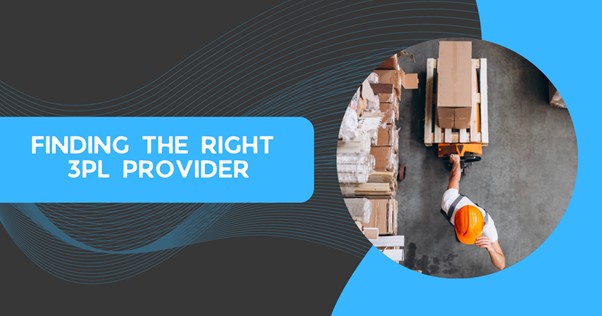
Finding the right 3PL requires careful analysis of the provider's capabilities, cost structure, technological infrastructure, and alignment with business goals. To effectively compete with Amazon FBA businesses, 3PLs must be able to enhance efficiency, reduce costs, and improve customer satisfaction.
A strategic selection will ensure that the 3PL provider complements the specific needs and objectives of the business, leading to a successful collaboration.
Researching Reputable 3PL Companies:
Search for reputable 3PL companies involves looking at industry ratings, client testimonials, and recommendations. Gathering this information helps shortlist providers known for their reliability, integrity, and quality of service. Use third-party vetting sites that have pre-qualified local providers. For example, Texas has 52,000 warehouses in the State. Vetting them yourself is near impossible but leveraging a third-party vetting service can make your research more efficient.
Research ensures that the businesses engage with a 3PL partner with a positive standing in the market, setting the foundation for a successful partnership.
Evaluating Their Capabilities and Track Record:
Assessing the 3PL providers' capabilities and track record means reviewing their experience, technology, scalability, and alignment with specific shipping needs. It's also crucial to ensure that your chosen 3PL provider is compliant with PCI DSS standards to secure customer data.
Analyzing their past performance with similar businesses gives insight into how they handle real-world challenges. This evaluation ensures the chosen provider is well-equipped to meet the business's unique demands.
Comparing Pricing and Services:
Pricing and services should be compared across 3PL providers to find the best value. This doesn't just mean looking at the cost alone but evaluating what is offered at that price point.
Understanding the full scope of services, additional fees, and the flexibility in pricing models helps make an informed decision. This comparison allows businesses to choose a 3PL provider that delivers the required services at a competitive and transparent price, aligning with budget and quality expectations.
Integrating Your E-Commerce Platform with the 3PL Provider

Integrating your e-commerce platform with the 3PL provider streamlines the shipping process. This integration ensures seamless communication between systems, automating the transfer of orders, tracking information, and inventory data.
By creating a cohesive link between the e-commerce platform and the 3PL provider, businesses can enhance efficiency, reduce errors, and provide a consistent customer experience, making the shipping process more agile and responsive.
Understanding API Integration:
API (Application Programming Interface) integration is the technical bridge that connects the e-commerce platform with the 3PL provider. It enables the two systems to communicate and share information.
Understanding how API integration works is vital for a smooth operation, as it automates data exchange, such as order details and inventory status. This ensures that both systems are always aligned and that vital information is exchanged securely and efficiently.
Data Synchronization for Real-Time Order Tracking:
Data synchronization ensures that all information related to orders, shipments, and inventory is updated in real time across both systems. This synchronization allows for real-time tracking of orders, providing transparency and enhancing customer satisfaction.
It eliminates delays and inconsistencies, always providing businesses and customers with accurate, up-to-date information.
Testing the Integration for Seamless Operations:
Before fully implementing the integration, testing means verifying data flow between the e-commerce platform and the 3PL provider and checking for inconsistencies or errors.
Testing ensures that all parts of the integration work cohesively, from order processing to inventory management. This step is crucial to catch any potential issues early and ensure the integration operates seamlessly once live, contributing to a more efficient and error-free shipping process.
Setting Up Shipping Parameters
Setting up shipping parameters involves defining specific rules and conditions for shipping, such as shipping zones, weight limits, delivery times, and preferred carriers. These parameters guide how orders are processed and shipped, ensuring consistency and efficiency.
By carefully establishing these rules, businesses can align the shipping process with their strategic goals and customer expectations, enabling a smooth, responsive, cost-effective operation.
Defining Shipping Preferences and Options:
Determining shipping preferences and options is about choosing the best ways to deliver products to customers. This includes offering various shipping speeds, methods, and additional services such as gift wrapping or insurance.
Aligning these options with customer needs and business strategy ensures that the shipping process meets expectations while maintaining cost efficiency. Defining preferences creates a structured, customer-centric approach that enhances the shopping experience and fosters post-purchase engagement.
Selecting Shipping Carriers and Services:
Suitable shipping carriers and services are crucial for meeting delivery promises. This involves evaluating carriers based on their reliability, cost, coverage areas, and specific services they offer.
Selecting the carriers that align with the business's shipping strategy ensures that customers receive their orders promptly and dependably. It also allows flexibility in offering various shipping options to suit customer preferences and budgets.
Implementing Shipping Rules and Restrictions:
Implementing specific shipping rules and restrictions is about creating clear guidelines for shipping products. This includes setting rules for shipping products to specific regions, weight or size limitations, and special handling requirements. These rules ensure that all shipping operations comply with legal regulations, carrier limitations, and business policies.
MyUS adheres to the export regulations of the United States and import regulations of over 220 countries and territories. 3PLs such as these are vital in making sure your business can expand its reach no matter where. There are some items that cannot be legally shipped due to customs laws and delivery company or airline restrictions. These 3PLs must have the appropriate Prohibited & Restricted Item Guide that they enforce and follow.
Establishing clear and enforceable guidelines makes the shipping process more streamlined and less prone to errors or conflicts, supporting a more efficient and customer-friendly operation.
Packaging and Labeling Guidelines

Packaging and labeling guidelines ensure products reach customers securely and with all necessary information. Adequate packaging protects items during transit, while clear labeling provides essential details such as address, tracking number, and handling instructions.
Adhering to these guidelines helps in smooth delivery and reflects professionalism and attention to detail, enhancing customer satisfaction and trust in the brand.
Packaging Best Practices for Various Products:
Packaging must be tailored to the specific needs of different products. Fragile items may require bubble wrap, while clothing might be best in poly mailers. Delivery for unusually shaped or fragile items will require unique packing specifications. Presentation and protection also become equally important for special occasions like sending holiday gifts. No one would want to receive a messy and broken package.
For example, items like gadgets that break easily might need extra protection, and items like medicines and even makeup may need special conditions to ensure they don’t spill or get ruined during its shipment.
Utilizing packaging best practices ensures items reach their destination in perfect condition, reflecting professionalism and enhancing customer satisfaction. By considering the unique requirements of each product, unnecessary waste can be minimized, and the unboxing experience can be made memorable.
Meeting Shipping Carrier Requirements:
Each shipping carrier has its guidelines for packaging and labeling. Understanding and adhering to these requirements is essential to prevent delays, additional charges, or shipment refusal. This includes following rules on package size, weight limits, labeling placement, and materials allowed.
Meeting these carrier-specific standards ensures a smoother transit process and helps maintain a dependable relationship with the shipping provider.
Generating Accurate Shipping Labels:
Accuracy in shipping labels is paramount for successful delivery. Each label must include essential information such as the recipient's full address, return address, tracking number, and relevant handling instructions. This information needs to be corrected to avoid misrouting or delays.
Utilizing software or platforms that assist in generating accurate labels can streamline this process, reducing the likelihood of human error. This ensures that packages are promptly directed to the correct destination, enhancing efficiency and customer satisfaction.
Managing Inventory with 3PL
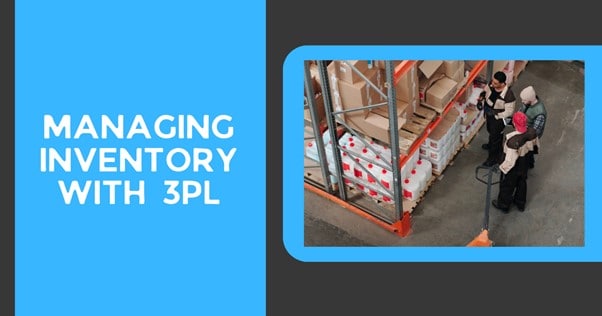
Managing inventory with 3PL is about leveraging third-party expertise to optimize stock levels and storage. A 3PL provider can handle warehousing, picking, packing, and shipping, aligning with the business's demand and supply dynamics.
By integrating inventory management with a 3PL, businesses gain real-time insights and efficiency, allowing them to focus on core activities while ensuring that products are readily available and delivered on time.
Syncing Inventory Data with the 3PL System:
Integrating inventory data with the 3PL system is crucial in streamlining operations. This synchronization ensures that the business and the 3PL provider have real-time access to inventory levels, order statuses, and other vital information.
Maintaining consistent data across platforms makes decision-making more informed, reducing the risk of overselling or stockouts. This seamless exchange of information enhances efficiency and allows for a more agile response to market demands.
Tracking Inventory Levels and Replenishment:
Tracking inventory levels closely helps maintain an optimal stock balance. With real-time monitoring through the 3PL system, businesses can see exactly what is on hand, what's in transit, and what needs replenishing. This detailed tracking allows for timely restocking and prevents both overstocking and stockouts.
Properly managing inventory levels ensures that products are available when customers want them, improving satisfaction and overall business performance.
Implementing Safety Stock Measures:
Safety stock is a buffer of extra inventory kept on hand to protect against unexpected fluctuations in demand or supply. Implementing safety stock measures with a 3PL provider adds a layer of security, ensuring product availability remains consistent despite unforeseen challenges.
Working closely with the 3PL provider to determine the right amount of safety stock for specific products or seasons helps create a resilient supply chain that can adapt to changes without impacting customer service.
Monitoring and Optimizing Shipping Performance
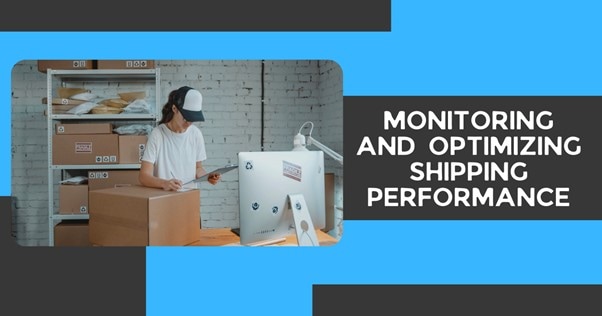
Monitoring and optimizing shipping performance is a continuous process that ensures efficiency and customer satisfaction. By analyzing key metrics such as delivery times, shipping costs, and carrier performance, areas for improvement can be identified.
Collaborating with a 3PL provider in this monitoring enables adjustments to be made in real-time, fostering a shipping operation that is not only responsive but constantly evolving towards higher levels of excellence.
Tracking Shipment Status and Delivery Times:
Real-time tracking of shipment status and delivery times provides valuable insights into the shipping process. Monitoring these factors can identify and address any delays or issues promptly.
Keeping a close eye on delivery performance helps maintain customer satisfaction and allows for proactive management of potential problems. Consistent on-time deliveries enhance brand reputation and foster trust among customers.
Analyzing Shipping Costs and Expenses:
A detailed analysis of shipping costs and expenses allows a better understanding of where resources are utilized. Evaluating costs related to carriers, packaging materials, labor, and other variables enables the identification of areas where savings might be achieved.
Continuous monitoring and assessment of these expenses provide a clear view of the shipping operation’s financial health and help make informed decisions aligning with the overall business strategy.
Implementing Improvements for Better Efficiency:
Continuous improvement is at the heart of an optimized shipping process. By regularly evaluating performance, recognizing inefficiencies, and implementing changes, efficiency can be consistently enhanced. This might involve refining packaging methods, negotiating better carrier rates, or integrating new technologies.
Such improvements not only reduce costs but also elevate the quality of service, making the entire shipping process more streamlined and customer-centric. By fostering a culture of continuous improvement, businesses can adapt to change and stay ahead in the competitive market.
Conclusion
Shipping processes can make or break an e-commerce business, directly influencing customer satisfaction and the bottom line. A thorough assessment of shipping needs, identifying challenges, and setting clear objectives provide the foundation for a robust shipping strategy. Third-party logistics (3PL) providers can be invaluable partners, offering their expertise, resources, and technology to simplify the process.
When choosing a 3PL provider, thorough research, carefully evaluating capabilities, and comparing pricing and services are paramount. Once a suitable 3PL provider is identified, integrating the e-commerce platform and setting up shipping parameters come into play. Businesses should also understand API integration, enable data synchronization for real-time order tracking, and test the integration for seamless operations.
Adequate packaging and labeling practices, aligning with carrier requirements, and generating accurate shipping labels ensure products reach their destination in good shape and on time. The 3PL makes inventory management more accessible, from syncing data and tracking inventory levels to implementing safety stock measures.
Constant monitoring and optimizing shipping performance, including tracking shipment status, analyzing costs, and implementing improvements, are critical for success in e-commerce shipping.
Through the strategic use of 3PL, e-commerce businesses can simplify their shipping processes, enhance efficiency, improve customer satisfaction, and achieve tremendous success in their operations.
Author, Will Schneider is the founder of InsightQuote, a match-making service for B2B services, and writes informative posts about fulfillment services at Warehousing And Fulfillment. He is passionate about helping businesses find the right solutions to improve their operations. When not working, Will enjoys coaching youth basketball.

